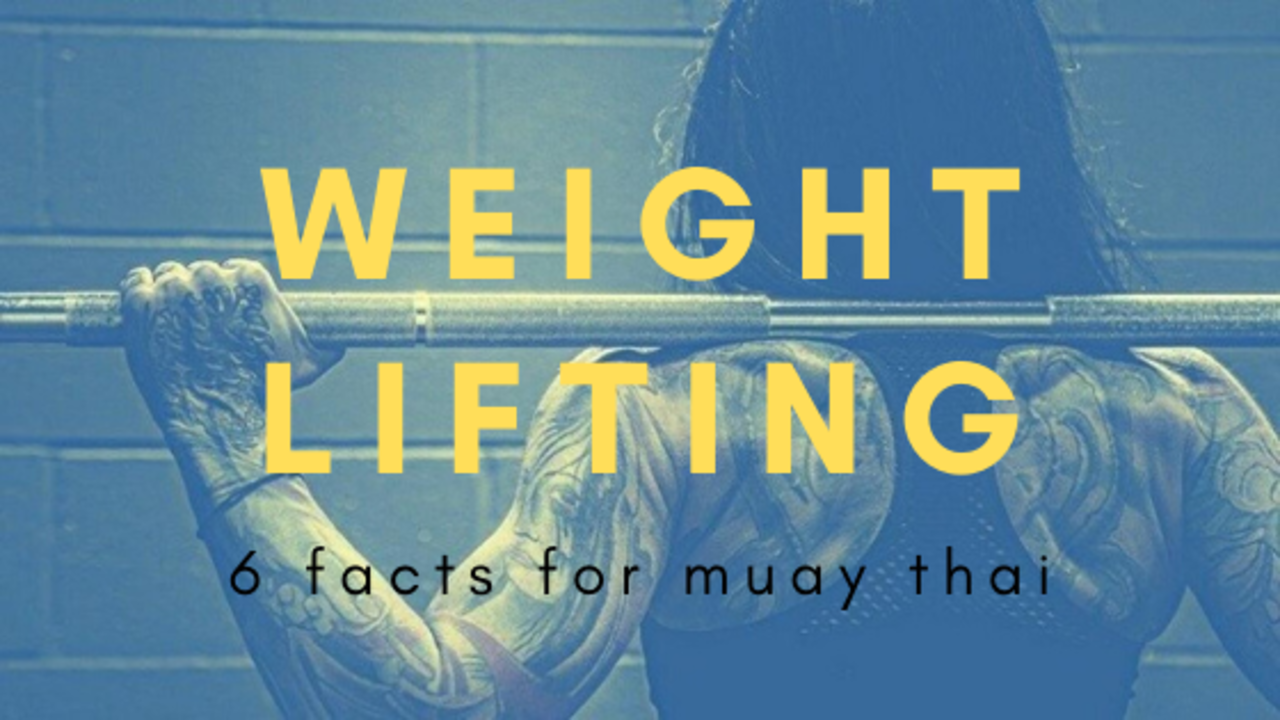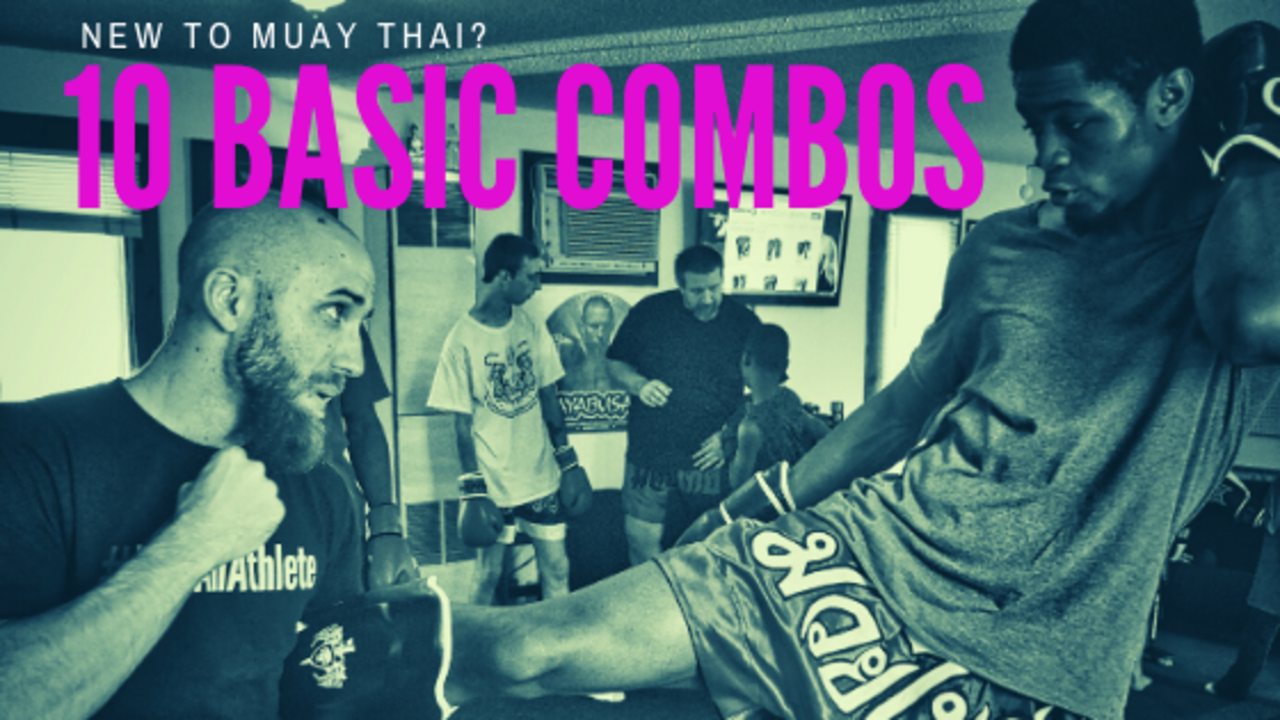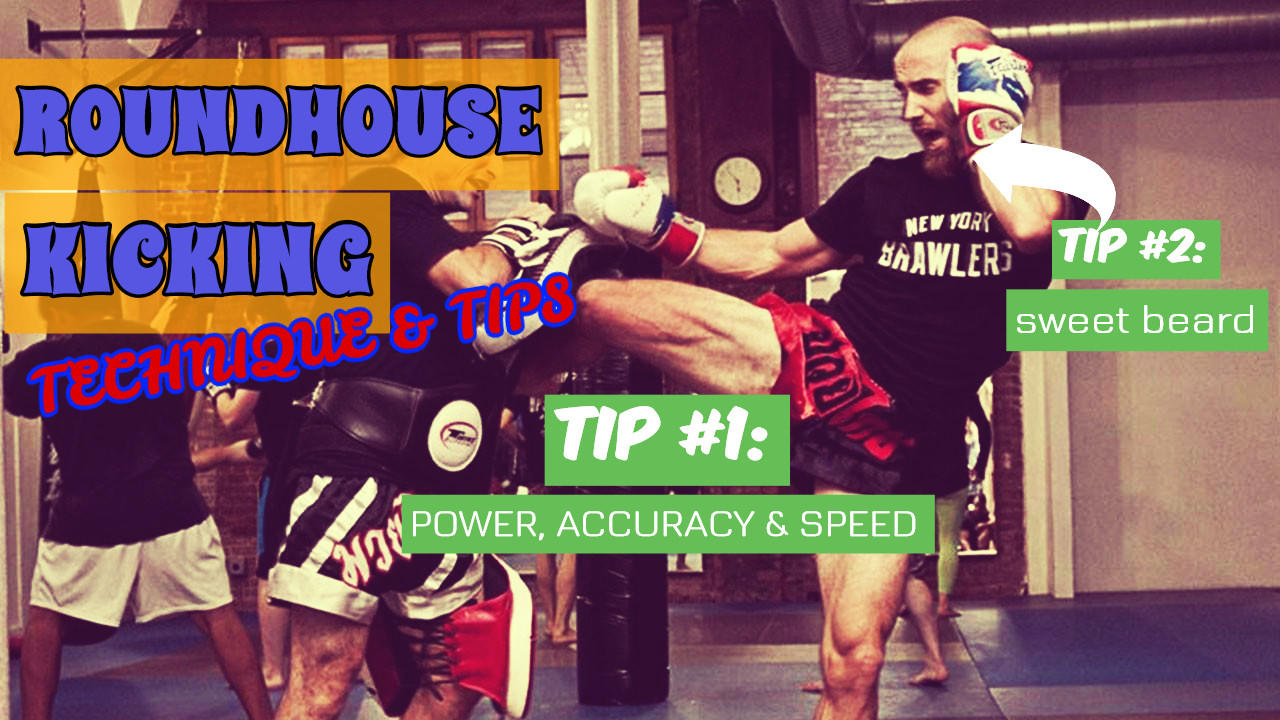6 Facts About Muay Thai Weight Lifting

WEIGHTLIFTING POWERS UP YOUR MUAY THAI GAME
By Nick Spiegler

Traditionally speaking, people that train Muay Thai (some fighters in particular) shy away from weight lifting. A very common mindset and training approach is that a few sets of calisthenics is sufficient for strength development.
In the modern age, however, some pushups and pull-ups are not going to cut it. Proper strength training done in a smart and focused way will only serve to improve overall fitness and your fight game. If you want to get serious about lifting for your Muay Thai game, then you need to accept the following six points as true.
#1: Lifting Won’t Make You Any Slower
Believe it or not, weight lifting will not make you bulky and slow if you do it properly. However, a high calorie diet and lifting like a bodybuilder can make you add unnecessary mass and cause you to be slower in your movements. So eat the calories necessary for training and lift specifically to improve for Muay Thai.
Want more spe...
The Muay Thai “Grunt” – Benefits of Kicking & Screaming

THE BENEFITS OF MAKING WEIRD SOUNDS WHEN YOU PUNCH & KICK SHIT
By Sean Fagan
OOOSSSHHH!!!
AAAYYYYY!!!
HMMPPHHHHH!!!
Sound familiar?
If you’ve been in a Muay Thai gym long enough, you’ll hear a variety of these sounds throughout your training sessions.
When I first trained Muay Thai in Thailand, one of the most noticeable differences between the common farang and the experienced Thai fighter was the fact that every single fighter who hit the heavy bag or banged the pads would make some kind of weird ass sound every time they threw a strike.
You’ve noticed this too, right?
Even if you train at a Western gym, there’s always that one guy who hits the bag and makes awkward high-pitched screams every time he throws a kick… now why would anyone ever do that?
At first, I thought that grunting during training was super annoying and weird. I guess it’s similar to the way I used to feel about the Thai music that played in the background during fights. At first I never understood it, but...
5 Unwritten Rules Of Muay Thai Sparring

THESE ARE THE UNIVERSAL SPARRING RULES
By Angela Chang
The bell rings and you touch gloves. Not much is usually exchanged during a round or even between rounds, at least not verbally. Physically, it’s a different story.
Sparring is a part of training and everyone who’s trained for at least a bit should be doing it. For those new to Muay Thai or combat sports in general, though, it’s important to know that there are some common ground rules when it comes to sparring – no matter where you are or who you’re up against.
SPARRING RULE #1: Big gloves are a must.
Perfect for sparring are gloves in the 14-18 ounce range. They have more padding in them so that even if you go hard, it softens the blow a bit. Wearing big gloves promotes a safe environment in which everyone can participate.
Lighter gloves are meant for hitting the bag or hitting pads. Do not crack a fellow teammate with those gloves. They can get seriously hurt (broken nose, concussion, etc.) or start bleeding like a bus...
8 Best MMA Fighters Fighting Out of the Philippines

THESE ARE THE BEST FILIPINO FIGHTERS IN MMA TODAY
By Blake Jeffries
Mixed martial arts (MMA) has truly gone global. Proof of this is how countries like Thailand and Malaysia are producing top-caliber MMA talent. But one country, in particular, is fast becoming an MMA hotbed. That country is the Philippines.
In light of that fact, here are eight of the best MMA fighters currently fighting out of the Pearl of the Orient. They are all still active, and will likely build their respective legacies even more.
#1: Brandon Vera
IMAGE CREDIT: Pinterest
Vera (16-7-1) is not only one of the best MMA fighters representing the Philippines today, he is arguably the country’s finest MMA fighter so far. "The Truth" is a veteran of 13 UFC fights and has wins over Frank Mir and Reese Andy.
Ironically, it was in a loss that Vera truly shined. In UFC 105, Vera pushed the great Randy Couture to the hilt before losing via a close decision.
A decade later, 41 year old Vera is still going strong...
5×5 Circuit Workout for Strength & Endurance

A COMPLETE WORKOUT TO BUILD BOTH POWER AND CARDIO
By Sean Fagan
To be a complete badass, you need to be performing solid workouts that will target power, strength, muscular endurance, cardio, abs and core, explosiveness, and mental toughness. Sound tough? Too bad. Time to work your ass off!
Welcome to The Funk and Flex MMA 5×5 Station Circuit – By Funk Roberts
This strength and conditioning workout is ideal for fighters, but also anyone looking for all-round fitness. If you want to be ready for anything life throws at you, this is your workout. That’s why this method of training is also ideal for those in the military.
This circuit is called the 5×5 Station Circuit because it involves making your way through five stations, in five minutes each. Pretty simple. At each station, you go through the listed exercises one after the other. You keep performing these exercises in rotation for five minutes, and then you move on to the next station.
Sounds simple enough… but wait unt...
10 Basic Muay Thai Combos For Beginners

NEW TO MUAY THAI? START WITH THESE SIMPLE COMBINATIONS
By Evan Lee
Wait? Isn’t this quantity over quality? Well, that depends on how you look at it.
Quantity is an often overlooked component of training. The focus on quality is often at the forefront of everyone’s vision. It makes sense, because by attempting to spread yourself across you will be spreading yourself thin, thus proving the inferiority of quantity.
In what world, then, would it be sane to suggest that quantity rule over quality?
In one where mistakes can be made.
Training can often get stale when all you do is sharpen your own tools. When one is preparing for a fight, any mistake in training can be costly and throw off the entire training camp, the margins of error are thin. No room for no lollygagging up in this.
What about when you’re not training for a fight? That’s when the fun begins.
When you’re training for fun and to develop skills, that’s when you can throw everything at the wall and see what sticks. Fin...
Muay Thai Heavy Bag Workouts & Training Tips

THE BEST MUAY THAI WORKOUTS, COMBOS & DRILLS FOR THE HEAVY BAG
Doing intense, focused heavy bag workouts for Muay Thai is easily one of the most overlooked and under utilized aspects of training.
If used properly, the heavy bag is a super effective piece of training equipment for improving your cardio, power, speed, technique, focus, and movement.
All Muay Thai fighters should incorporate heavy bag training into their overall strength and conditioning workouts on a regular basis in order to improve overall fitness as well as striking skills.
Routinely using the heavy bag is something that I find most fighters don’t do enough of. And for the fighters that do use the heavy bag, they are usually making these common mistakes and end up not using it to it’s fullest potential and getting maximum results.
These are 5 of the most common mistakes that most Muay Thai fighters make while hitting the heavy bag. Fortunately there are ways to fix and avoid these bad habits so you...
Common Muay Thai Injuries and Remedies

HOW TO HEAL BRUISED SHINS, SHIN SPLINTS & SPRAINED WRISTS
By Sean Fagan

Sorry to break it to you, but at some point in your Muay Thai career, you are going to get hurt.
This could be a common Muay Thai injury like a blister or black eye, or it could be more serious like a sprained ankle or broken bone. In any case, being mentally prepared for roadblocks and learning how to persist past these obstacles is key to any nak muay’s career and overall sanity.
Before I go into some of the most common Muay Thai injuries, I want you to understand that when you are injured and can’t train, it is not the end of the world! I have had minor injuries and serious injuries that have kept me away from the gym, but there are always other ways to improve yourself and stay productive that do not always have to relate directly to training.
Also don’t be a dumbass. If you are seriously hurt, do not try to push through more training sessions and risk getting injured even worse. That being said, do not ...
How To Fight A Taller Opponent in Muay Thai

MUAY THAI TACTICS FOR DEFEATING A TALLER OPPONENT
By Sean Fagan
Fighting someone taller than you can be very frustrating, especially when you’re not sure what to do to negate the reach advantage your opponent has on you.
Getting jabbed in the nose or front kicked in the sternum is no fun, especially when you’re not able to return fire since you’re out of range.
Fortunately, throughout the history of Muay Thai and other combat sports, there has been a ton of fights where we can learn a lot of strategies, tactics and techniques to overcome a height disadvantage.
There are a few key fight strategies to consider whenever dealing with a taller opponent.
1) Find Your Range
Stay inside or outside your opponents range… not in the middle!
As the shorter fighter, you’re going to want to avoid the middle ground at all costs because that is the range where your opponent’s range will be most dangerous. Either stay on the outside where you can’t be reached or get in tight so you crowd...
Muay Thai Roundhouse Kick Technique Tips

THROWING A MUAY THAI ROUNDHOUSE KICK - PROPERLY
By Sean Fagan
Needless to say, the Muay Thai roundhouse kick is what makes Muay Thai one of the most deadliest martial arts in the world.
However if you throw a Muay Thai kick with sloppy technique you be less efficient (which makes you more tired) and you will leave openings in your defense.
Even though the roundhouse kick is one of the most basic Muay Thai techniques you’ll first learn when you step into a gym, it takes a lifetime to perfect. I’ve been training Thai boxing over 10 years now and still know that there is plenty of room to improve my kick technique to add more power and speed to it.
How NOT To Muay Thai Kick: 8 Common Mistakes
Basic Kick Technique Tips
- Be loose! Your leg should almost be completely dead weight that is guided by your hips, shoulders and torso.
- Push up on the balls of your post foot. This will help you generate more hip action and be more free to rotate through. If you are flat footed you los
...










